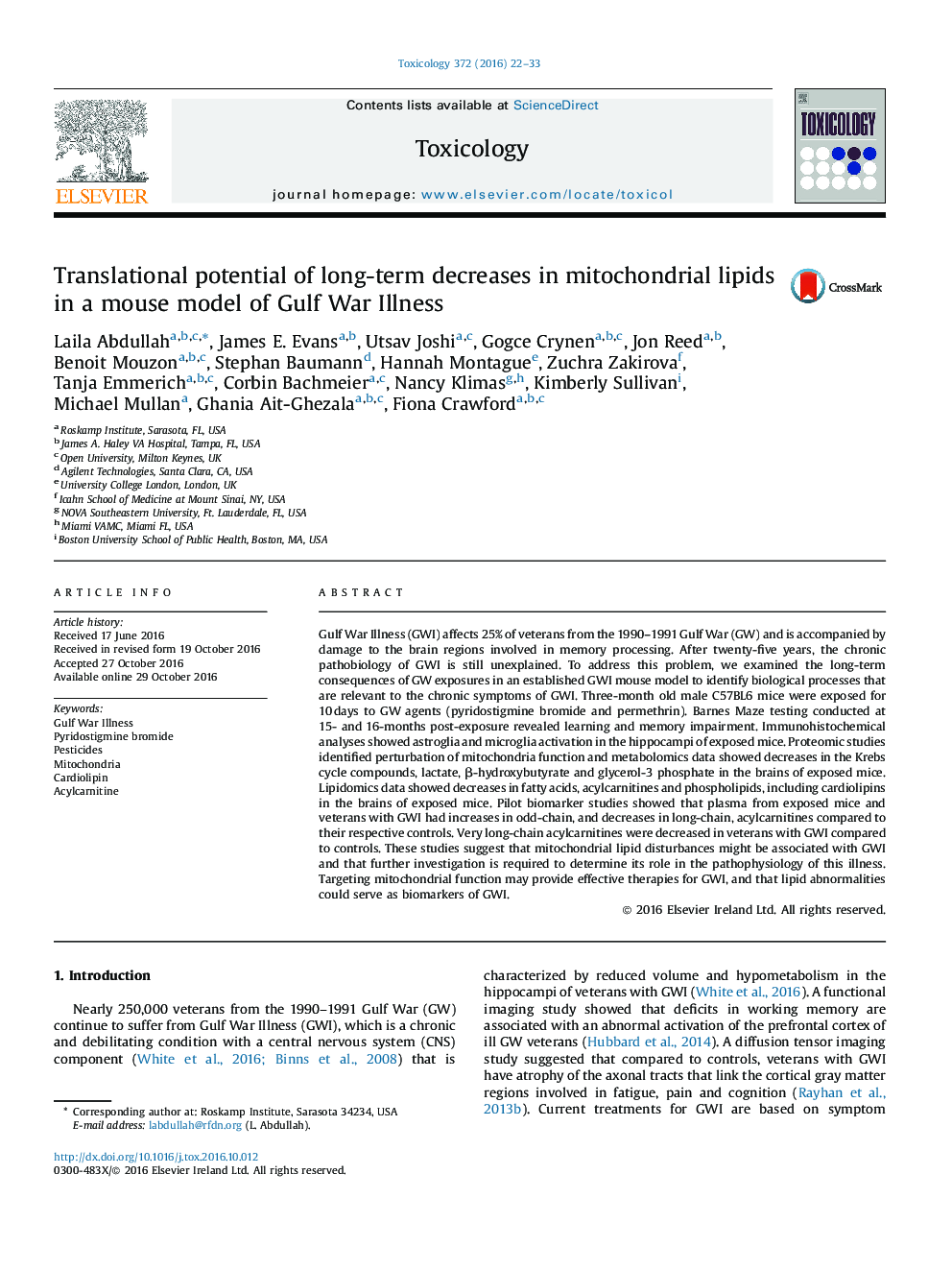| کد مقاله | کد نشریه | سال انتشار | مقاله انگلیسی | نسخه تمام متن |
|---|---|---|---|---|
| 5561930 | 1562300 | 2016 | 12 صفحه PDF | دانلود رایگان |
عنوان انگلیسی مقاله ISI
Translational potential of long-term decreases in mitochondrial lipids in a mouse model of Gulf War Illness
ترجمه فارسی عنوان
پتانسیل ترجمه از درازمدت کاهش چربی های میتوکندری در یک مدل موش در جنگ خلیج فارس
دانلود مقاله + سفارش ترجمه
دانلود مقاله ISI انگلیسی
رایگان برای ایرانیان
کلمات کلیدی
موضوعات مرتبط
علوم زیستی و بیوفناوری
علوم محیط زیست
بهداشت، سم شناسی و جهش زایی
چکیده انگلیسی
Gulf War Illness (GWI) affects 25% of veterans from the 1990-1991 Gulf War (GW) and is accompanied by damage to the brain regions involved in memory processing. After twenty-five years, the chronic pathobiology of GWI is still unexplained. To address this problem, we examined the long-term consequences of GW exposures in an established GWI mouse model to identify biological processes that are relevant to the chronic symptoms of GWI. Three-month old male C57BL6 mice were exposed for 10 days to GW agents (pyridostigmine bromide and permethrin). Barnes Maze testing conducted at 15- and 16-months post-exposure revealed learning and memory impairment. Immunohistochemical analyses showed astroglia and microglia activation in the hippocampi of exposed mice. Proteomic studies identified perturbation of mitochondria function and metabolomics data showed decreases in the Krebs cycle compounds, lactate, β-hydroxybutyrate and glycerol-3 phosphate in the brains of exposed mice. Lipidomics data showed decreases in fatty acids, acylcarnitines and phospholipids, including cardiolipins in the brains of exposed mice. Pilot biomarker studies showed that plasma from exposed mice and veterans with GWI had increases in odd-chain, and decreases in long-chain, acylcarnitines compared to their respective controls. Very long-chain acylcarnitines were decreased in veterans with GWI compared to controls. These studies suggest that mitochondrial lipid disturbances might be associated with GWI and that further investigation is required to determine its role in the pathophysiology of this illness. Targeting mitochondrial function may provide effective therapies for GWI, and that lipid abnormalities could serve as biomarkers of GWI.
ناشر
Database: Elsevier - ScienceDirect (ساینس دایرکت)
Journal: Toxicology - Volume 372, 30 November 2016, Pages 22-33
Journal: Toxicology - Volume 372, 30 November 2016, Pages 22-33
نویسندگان
Laila Abdullah, James E. Evans, Utsav Joshi, Gogce Crynen, Jon Reed, Benoit Mouzon, Stephan Baumann, Hannah Montague, Zuchra Zakirova, Tanja Emmerich, Corbin Bachmeier, Nancy Klimas, Kimberly Sullivan, Michael Mullan, Ghania Ait-Ghezala, Fiona Crawford,
